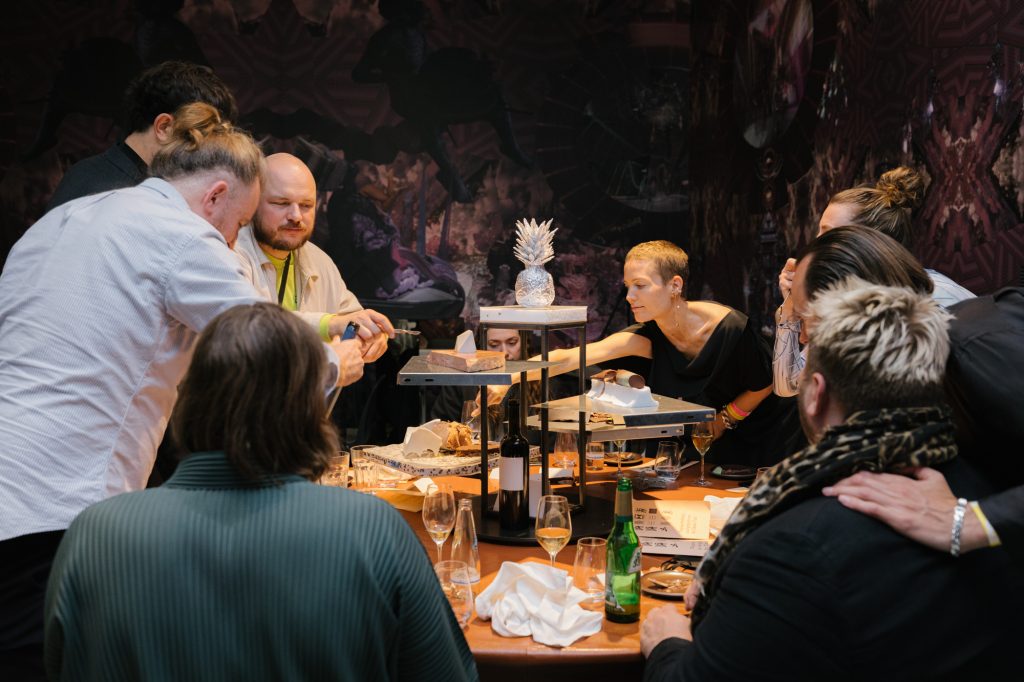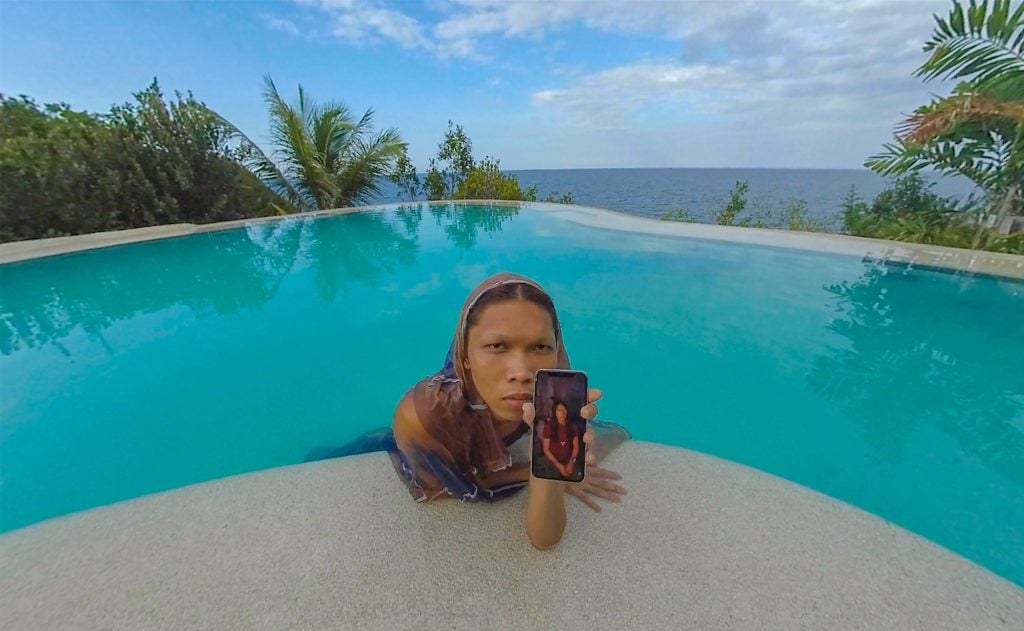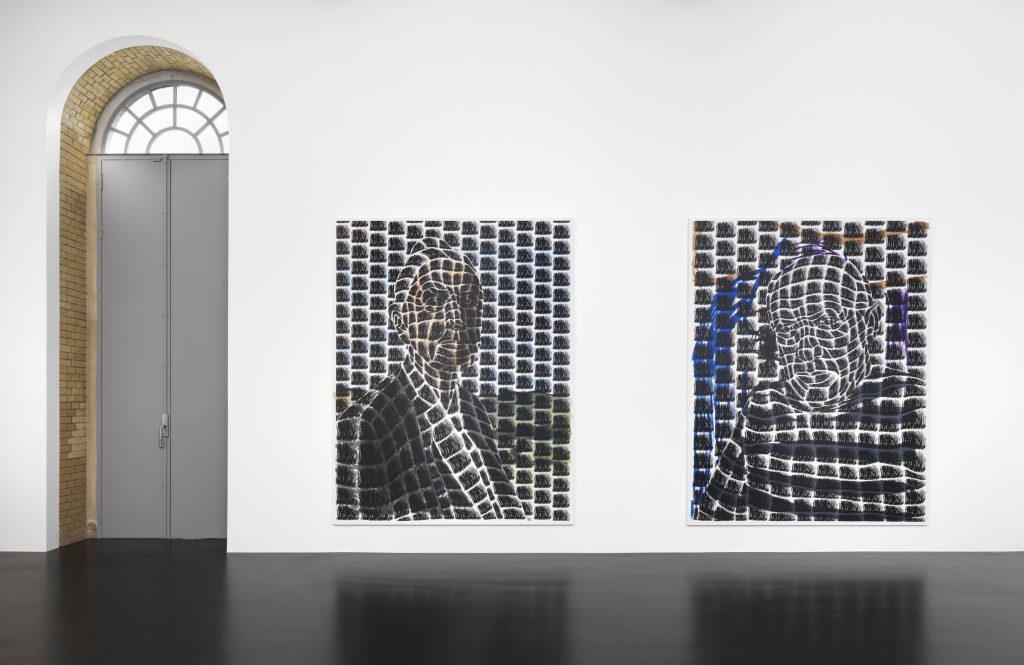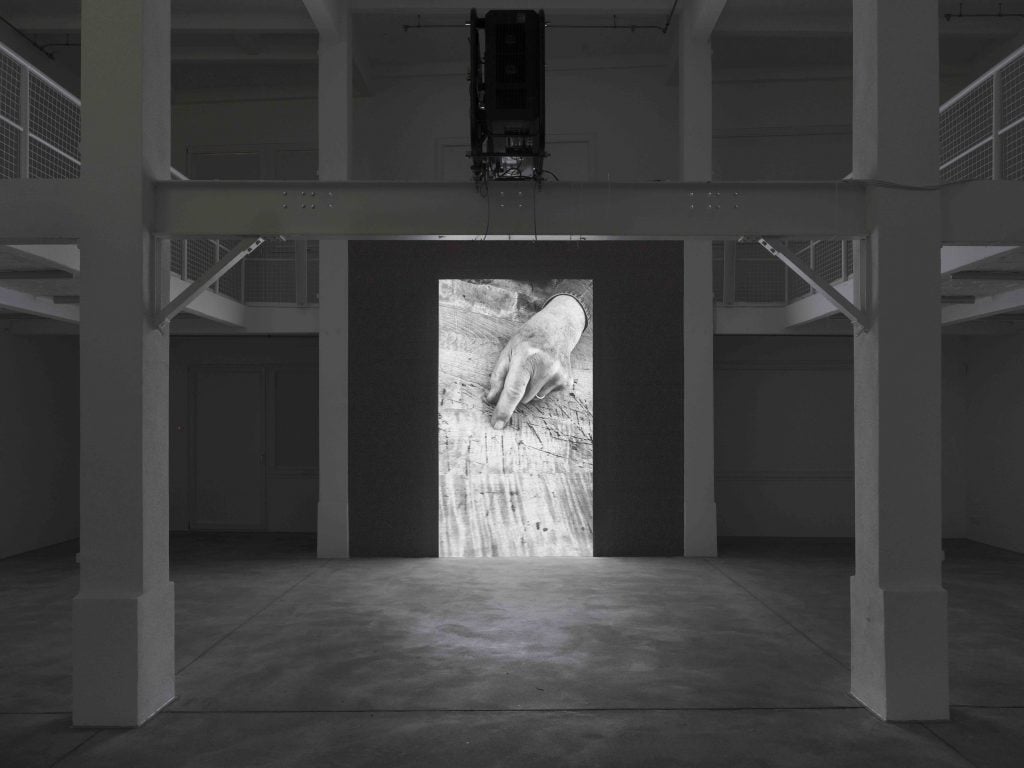Galleries
Gallery Weekend Berlin Returns From Its Hiatus With 52 Participating Galleries—Including New Spaces by Blue-Chip Collectors and Dealers
The annual Gallery Weekend Berlin is opening this week at some 50 galleries.

The annual Gallery Weekend Berlin is opening this week at some 50 galleries.

Kate Brown

There is an indomitable spirit that underpins this year’s annual Gallery Weekend Berlin, which opened its most “normal” edition since the onset of the pandemic. At some 50 exhibition openings across town, as well as adjacent programming at many institutions, maskless faces have returned, as did a VIP dinner of nearly 1,000 guests. Meanwhile, international collectors and art advisors have added a stop in Berlin to their European tours after the Venice Biennale preview last week.
Of course, things are still far from normal. There is a war going on in Europe, and it has caused a massive influx of refugees into the German capital.
“What does it mean to produce an exhibition in this moment and what can it do considering everything happening around us that is both in and outside of our control?” said Lisa Long, curator at the Julia Stoschek Collection as guests, including Udo Kittelman and Klaus Biesenbach, gathered against the psychedelic backdrop of a Jacolby Satterwhite installation, the artist’s largest-ever presentation of work in Europe.
The work is a part of “At Dawn,” a timely group show that probes alternative and utopian visions of the world, one where dreaminess isn’t separated from the urgent politics of our time. “During the last two years many of us have thought about what we missed most, revealing what we yearn for, and what needs to change so that we can work toward a world that holds not only a few but a multitude of lives and beliefs,” continued Long.

Stephanie Comilang and Simon Speiser, Piña, Why is the Sky Blue? (2021), video/virtually reality installation, Farbe, Ton. Video still. Courtesy of the artists.
These words seemed to echo across the preview this week. Among the many things we’ve missed is being together, and that has brought special jubilation to gallery dinners and events across town. At a performative dinner that Stoschek hosted, the art collector announced that she will likely be staying on in Berlin, a statement met with applause; there had been wide speculation that the respected collection might exit after her lease ended.
Stoschek has actually been expanding her Berlin program recently. She inaugurated an exhibition space dedicated to emerging artists, which opened with an installation by Berlin-based duo Stephanie Comilang and Simon Speiser. It included an ambitious VR work, a speculative documentary about a spiritual AI medium known as Piña who collects inherited knowledge. (Stoschek has acquired the work along with four other pieces from the group exhibition.)
Meanwhile, two mainstay Berlin galleries, neugerriemschneider and Mehdi Chouakri, have each opened new and larger spaces. neugerriemschneider’s second gallery is a stunning turn, featuring 20-foot-high walls that meet a rounded brick vaulted ceiling. On view there are mesmerizing, towering portraits by German artist Thomas Bayrle that surely could not have fit on the walls of its old venue.
“We wanted to offer a new challenge to our artists,” said gallery co-founder Burkhard Riemschneider. It is also literally next door to the studios of two artists in their stable, Olafur Eliasson and Ai Weiwei.

Thomas Bayrle, “durchscheinen ist alles,” installation view at neugerriemschneider’s new location at Christinenstraße 18-19 in Berlin. Photo by Jens Ziehe, courtesy the artist and neugerriemschneider.
Mehdi Chouakri, who has converted a large hangar of an old iron foundry into a formidable exhibition space, said that the past two years of working remotely only made the need for brick-and-mortar venues more apparent.
“When buying online, you cannot always see if the work truly fits your collection. Collectors really want to experience the work,” he said. A large-scale show of bright paintings by John Armleder proves the point—one might hardly pick up on the subtleties of the pigment and glitter without standing in front of them. Chouakri has also opened an archive for artist Charlotte Posenenske.
Also opening is a new presentation at Christian and Karen Boros’s converted wartime bunker, which is home to their formidable collection of contemporary installations, paintings, and sculpture. Only switched every three years, the new exhibition, which opens on May 1 and runs until 2025, presents new acquisitions of work by Anne Imhof, Eliza Douglas, and Bunny Rogers, among others.
Not far from there, Ai Weiwei has also been hanging new art, including intimate photos of his son, family, and friends, including collector Uli Sigg, in his old apartment, which he has turned into a popup exhibition dedicated to the subject of “home.”
But the thrust of Gallery Weekend Berlin program is its sprawling map of commercial galleries that are opening new exhibitions across town. Each year, a more or less strict cap of 50 dealers put their best propositions forward. Galerie Buchholz, for example is showing rarely seen early ceramics by Martin Wong, a Berlin precursor to a major show of the artist’s work coming to KW – Institute for Contemporary Art next year. At Société, its newly represented painter Conny Maier presents her darkly humorous figures. And Nagel Draxler has also debuted a new artist in its program, the painter Kevin Abosch.

Bruce Nauman, Practice, 2021, installation view, © Bruce Nauman/Artists Rights Society (ARS), New York/VG Bild-Kunst, Bonn, Courtesy Konrad Fischer Galerie, Photo: Roman März.
Though it’s nearing its 20th anniversary in a few years, the Gallery Weekend event continues to be a freshly minded alternative to art fairs. “Hosting people in your own context is so much better than sitting in a booth all day,” one director told me.
Of course, the key to the whole operation then is that collectors must come to you—which worked well up until the pandemic when even intercity travel turned complicated. Many dealers noted that this year, there is a strong European presence and even some collectors and advisors coming from afar.
The Berlin Gallery Weekend’s annual dinner of nearly 1,000 guests at the Neue Nationalgalerie will cap off the event, which returns after a two-year hiatus. It will also unveil a staggering presentation by Barbara Kruger, the artist’s first institutional show in Germany in 10 years.
The sun will set Saturday over her massive sans serif installation as the Berlin art world’s dealers and its VIPs gather for what might also be an unofficial welcome party for new director Klaus Biesenbach, who took the helm of the museum in January. Together with Gallery Weekend Berlin, donations will be collected during the VIP dinner on Saturday for Be an Angel, a Berlin charity focused on supporting refugees.
“I want an open, barrier-free place to be created for all people who practice social life, debate, inspiration and participation here with and through the arts. It must now become a place of ecological and social practice, a place for us in Berlin,” said Biesenbach on Wednesday, at the annual reception for the Prussian Cultural Foundation at the James-Simon-Galerie.
And though there is a darkness lingering in the center of Europe that must not be brushed aside—as Kruger’s flags, waving in the wind near the museum, remind us, “Please Cry”—we can hold onto those tough realities, as well as some joy and renewal, too.